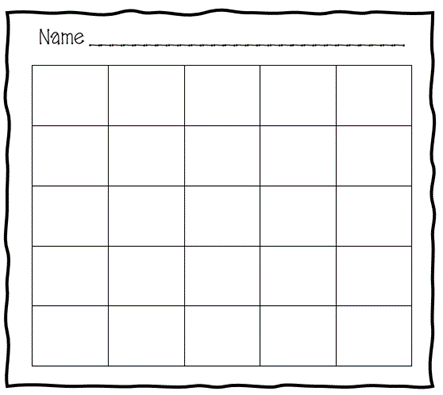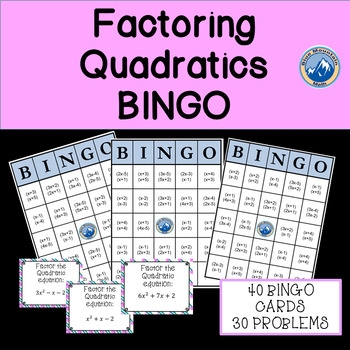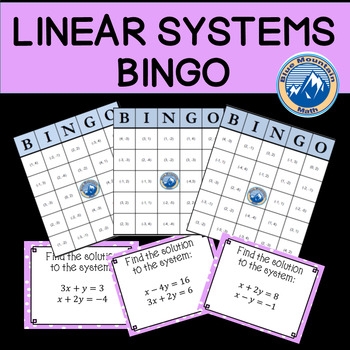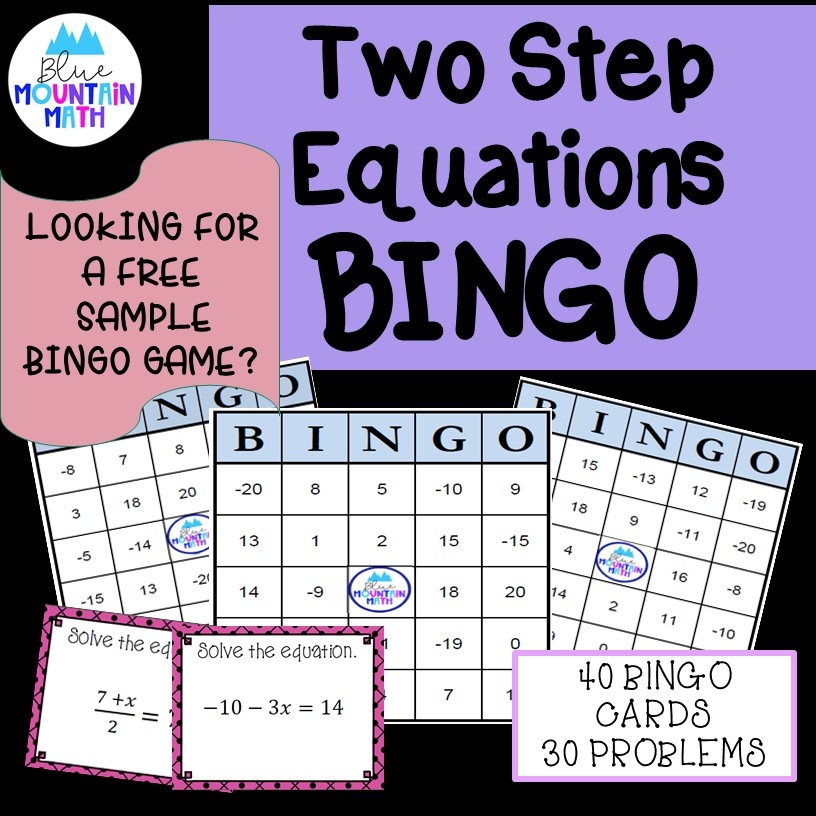It isn’t all fun and games in a math class–but it could be, and probably should. When we play a game, it lowers our stress level and makes it easier to focus. So in math class, when we play games we are making it easier to learn those math skills.

One of my students favorite games is Bingo. Mine too, I am a keen bingo player and have been known to sit for hours in a bingo parlor trying to get lucky. But I’m usually “one number away” from winning.
History of Bingo
Bingo has been around forever, nearly 500 years. It originated in Italy and spread to Europe. Years later, a salesman noticed a game using beans at a carnival booth in 1929 where the winner yelled “beano” because they were using beans as markers for the boards. The salesman thought they said “Bingo” and the game got the name we know it by today.
How to Play
Over the years, I have become better at explaining how to play games before we begin. I used to naturally assume that EVERYONE knew how to play bingo. Whatever variation you play they are the usual directions. A number is called, if the student has the number on their card, they mark it and when they have 5 in a row, column or on the diagonal, they win.
However, there is no reason WHY you have to play the standard game, just let the students know in advance. You can play 4 corners, where students just need a right answer in each of the 4 corners. Postage stamp is 9 answers in a block anywhere on the card (much harder to check). You can play columns and rows only (no diagonals allowed). Shown is Letter L, 6 pack and Railroad Tracks.
Or, after they students have been playing, have them play blackout, where every number is used on the card. Note, if you have just used 24 or 25 answers, this means every student will bingo at once. If you have students who are fast, use 36 answers instead to make it a little more difficult.
What Do Winners Get
My students like playing for points, used to replace missing assignments they may have. I tend to use points at the end of the semester when we are reviewing for finals, it gets them very engaged and at that point, every grade can use a few points as a boost.
The rest of the year? Good prizes are stickers, small candies, pencils, erasers. You can get small erasers, pencils at oriental trading company for a small price and they last a long time. I have a big box of small prizes I have accumulated over the years which includes small packs of crayons, colored pencils, miniature decks of cards, dice, etc. Kids like that box.
Bingo Variations
One reason to love bingo is that it is so versatile, and requires little prep. If you keep the blank bingo board printed in you file, you are ready in an instant. The original bingo card has 5 columns and 5 rows, but you can adapt this if your class is shorter. Make it a 4×4 board. That version will play quicker. If you need some blank boards, here they are:
Besides changing the board size, you can make other changes. There are so many ways to use this in your class. Here are some of my favorites.
Do It Yourself Bingo
Just as it sounds. When a teacher is low on prep, a stack of blank bingo boards will save the day. Give kids answers, you need a minimum of 24 if you allow a free space in the middle. I never do, there is no free ride in my math class, lol, so I use 25 answers when playing this version.
As I mentioned above, if you have a high-performing class, use even more answers, like 30 or 36. It will increase the challenge and make the game last longer.
Tell the students to place the answers at random on the board, one in each space. They need to use pen or a fine point marker (trust me on this, no pencils allowed). This should take no more than 5 minutes.
Then display the problems with a projector or write on the board. The students solve the problem, show their work on paper and if they have the answer, they mark it on their card. Keep doing this until someone yells “Bingo”. For the bingo to be recognized, students show me their card and their work. They must show work or the bingo is not valid.
It takes a long time to get a bingo, sometimes the entire class period is spent trying to get just one. And other classes work faster and we may have 5 or 6 bingos. It’s luck, and skill of the students.
Variation on DIY Bingo
Give students the blank Bingo sheet as before and then pass out the worksheet. Let students work on their own or with a partner. They solve the problems, picking which ones they want to solve and filling in their card with answers as they finish each problem.
This makes a great way to differentiate for students. I tell students, if they can’t finish enough problems to fill their card, at least put the answers in a row or column.
Then the last 15 minutes of class, teacher randomly calls out answers. Students cross them off their card if they have that answer, and teacher checks the card and work of any Bingos.
Pros and Cons
The advantage of this version is that students select their own problems. You can check their work to see if they are correct, and since time is limited, they are working as fast as possible so they can play.
The drawback is that some struggling students will not be able to finish all the problems. This variation works well for quick skills that can be easily finished by most students.
Task Card Bingo
If you took my advice from a previous blog, you have a stack of task cards for emergencies. Take them out and use them as your bingo questions. Give students that blank bingo card and pass out task cards to each group. They work on the problems and fill in their card as before and toward the end of class, teacher calls out the answers.
Prepared Games
You can always make or purchase a game with unique cards for each student. Print and laminate the cards for repeated use. Students can then use a dry erase marker to mark their card, which can be erase easily. I have several bingo games in the TPT store. And even a free bingo game for my blog readers.
Tips
After you have played a few times, try some variations, In addition to the variations already discusses, here are large postage stamp, small X and cross. Make sure you show students the variation and what it looks like on the card so it is clear.

If you have every played bingo or seen a movie about bingo players, the callers make the game lively. Have some fun while calling the numbers out, be a little goofy.
It sometime takes some time for students to get a bingo, keep the energy up when calling numbers. Ask which numbers the students need, ask how many they need for a bingo, etc. Call out the names of students getting close.
If you are using prepared game cards, let students choose their own card. And if after the first three numbers are called, they haven’t gotten a number yet, let them exchange the card.
When the game is finished, collect the cards and work. Students should be acknowledged for working hard, even if they did not win. Have some consolation prize available.
If now you are excited to have a bingo day in you class, here is a free bingo game for Solving Two Step Equations.
I hope you will play bingo soon in class. Your students will have fun, and still be learning. Let me know how it goes by commenting below. If you try a different variation, please share. Email me at [email protected]














Leave a Reply